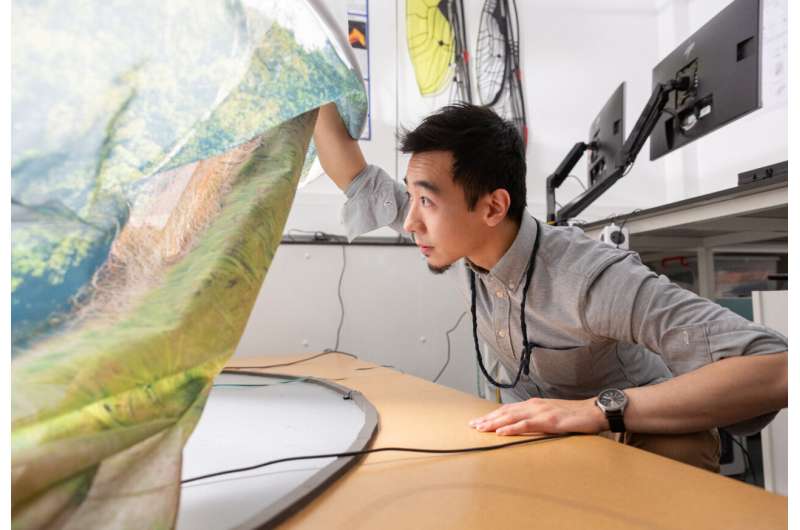Mechanosensory system found on insect wings could inform future wing designs

Researchers studying dragonflies have put together the most complete description of an insect wing sensory system ever recorded.
The research team, led by Dr. Huai-Ti Lin, from Imperial’s Department of Bioengineering, is working to understand how flying insects monitor the state of their wings in real time and respond to changes in airflow by studying sensors on the wing.
It is envisioned that by studying the wing sensors that are used by insects and other flying animals, researchers will be able to understand what is the critical information required to build more effective wings on aircraft or other machines that control airflow.
Animal wings deform by bending and twisting during flight in ways that can enhance lift, facilitate flight control, and mitigate damage; a process that requires mechanosensors that respond to local airflow and strain on the wing.
Without a complete map of the sensory network, past attempts to analyze wing mechanics and model the feedback control strategies used in flight have been mostly hypothetical.
To fully understand how deformable wings work, researchers need to know what mechanosensors are found on the wing and how they are wired and distributed.
The research team found a surprisingly high number of sensors on the dragonflies and damselflies. Two of the 15 studied species are being thoroughly surveyed: the eastern amberwing (Perithemis tenera) species of dragonfly and blue-fronted dancer (Argia apicalis) species of damselfly.
The researchers estimate that the eastern amberwing dragonfly would have more than 3,000 wing sensors on its four wings, while the damselfly species would have approximately half this number.
Dr. Lin said: “For a long time, we have known that all flying animals’ wings have mechanosensors and that is the same with insects, but we were surprised by the variety and sheer number of sensory neurons that exist on the wing. We did not expect to find so many.
“Maintaining neurons costs quite a bit of metabolic energy, so that means the animal is investing a lot on this sensory system. The next big question is what kind of information does it bring back?”
Applying findings to wing design
The second stage of research, which is ongoing, involves recording neural signals coming from the wing while applying airflow over it to decode what these signals represent during flight.
This will connect to a concurrent third stage of research, which will explore strategies that could be applied directly to wing design, based on the stage one findings on the types of sensors that are placed on the wing and how the wing deforms.
One example given by Dr. Lin was the discovery of a sensor that is placed in a pattern that appears to detect airflow separation, which can lead to wing stall.
Dr. Lin said: “Something that we could implement on aircraft wings would be a pattern of flow sensors that can predict when and where stall happens in real-time.
“This would be very valuable information for flight control because the wing will usually be able to detect something happening before the airplane’s main body starts to have some sort of vibration. By placing sensors directly on the wing, you can detect these things much earlier especially in unsteady airflow which is difficult to model and account for in the stock flight controller.
“Wing designs are important from F1 cars to wind turbines. We expect bio-inspired wing sensing to play a role in the functional designs of future wings.”
“Systematic characterization of wing mechanosensors that monitor airflow and wing deformations,” by Joseph Fabian et al., is published in iScience.
Insects’ drag-based flight mechanism could improve tiny flying robots
Joseph Fabian et al, Systematic characterization of wing mechanosensors that monitor airflow and wing deformations, iScience (2022). DOI: 10.1016/j.isci.2022.104150
Citation:
Mechanosensory system found on insect wings could inform future wing designs (2022, April 11)
retrieved 11 April 2022
from https://phys.org/news/2022-04-mechanosensory-insect-wings-future-wing.html
This document is subject to copyright. Apart from any fair dealing for the purpose of private study or research, no
part may be reproduced without the written permission. The content is provided for information purposes only.
For all the latest Science News Click Here
For the latest news and updates, follow us on Google News.

